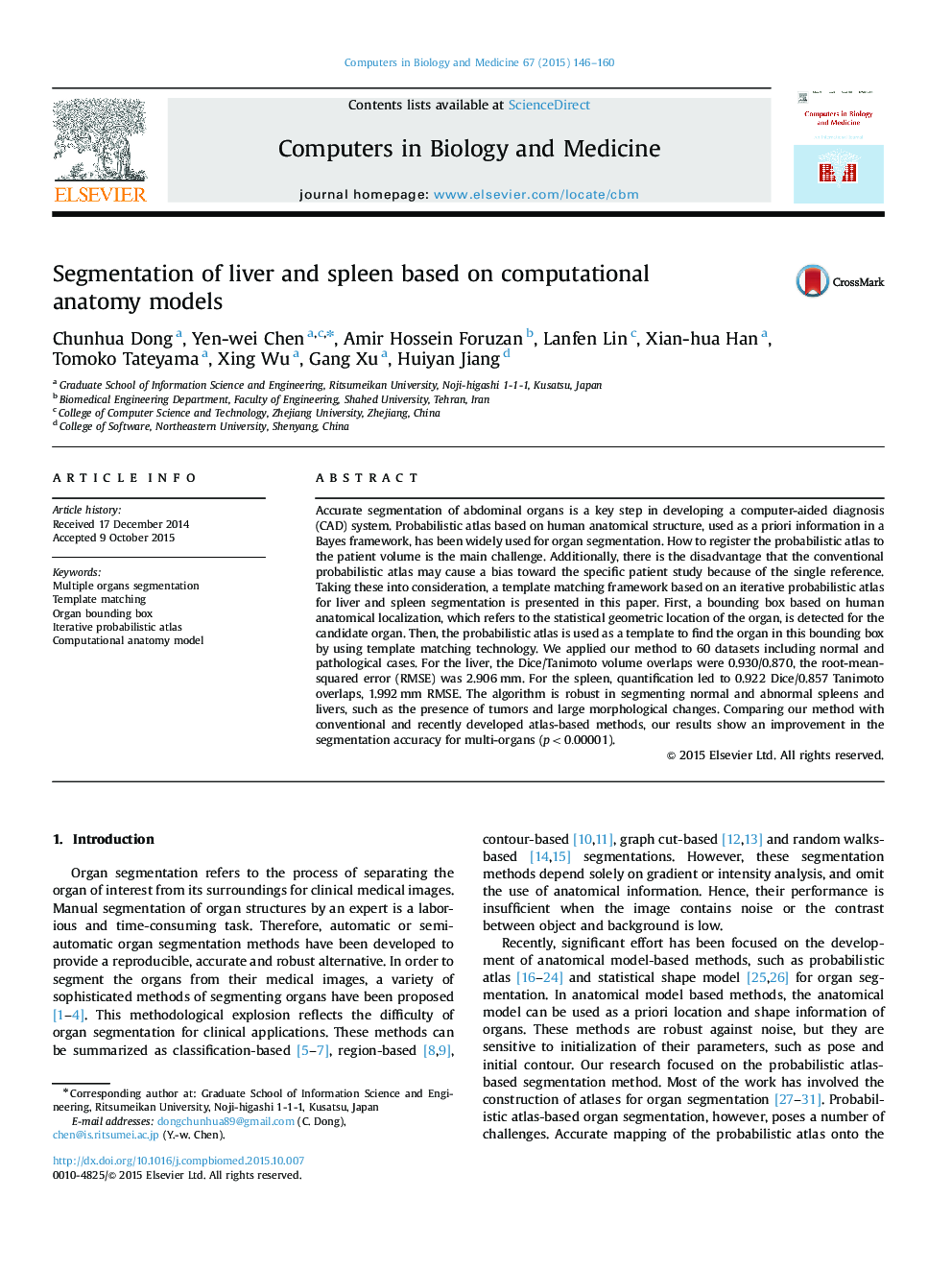| Article ID | Journal | Published Year | Pages | File Type |
|---|---|---|---|---|
| 504856 | Computers in Biology and Medicine | 2015 | 15 Pages |
•Propose a novel framework for multi-organs segmentation.•Incorporate an atlas concept within an organ bounding box construction.•Iterative probabilistic atlas overcome a bias toward the specific patient study.•Adaptive select reference bone for accurate alignment of the given data.•Achieve the promising performance (p<0.00001p<0.00001) compared with conventional method.
Accurate segmentation of abdominal organs is a key step in developing a computer-aided diagnosis (CAD) system. Probabilistic atlas based on human anatomical structure, used as a priori information in a Bayes framework, has been widely used for organ segmentation. How to register the probabilistic atlas to the patient volume is the main challenge. Additionally, there is the disadvantage that the conventional probabilistic atlas may cause a bias toward the specific patient study because of the single reference. Taking these into consideration, a template matching framework based on an iterative probabilistic atlas for liver and spleen segmentation is presented in this paper. First, a bounding box based on human anatomical localization, which refers to the statistical geometric location of the organ, is detected for the candidate organ. Then, the probabilistic atlas is used as a template to find the organ in this bounding box by using template matching technology. We applied our method to 60 datasets including normal and pathological cases. For the liver, the Dice/Tanimoto volume overlaps were 0.930/0.870, the root-mean-squared error (RMSE) was 2.906 mm. For the spleen, quantification led to 0.922 Dice/0.857 Tanimoto overlaps, 1.992 mm RMSE. The algorithm is robust in segmenting normal and abnormal spleens and livers, such as the presence of tumors and large morphological changes. Comparing our method with conventional and recently developed atlas-based methods, our results show an improvement in the segmentation accuracy for multi-organs (p<0.00001p<0.00001).
